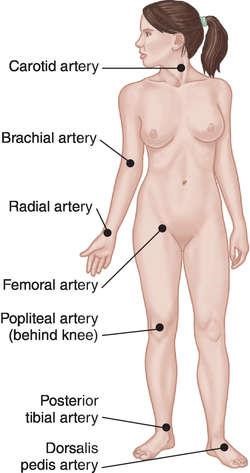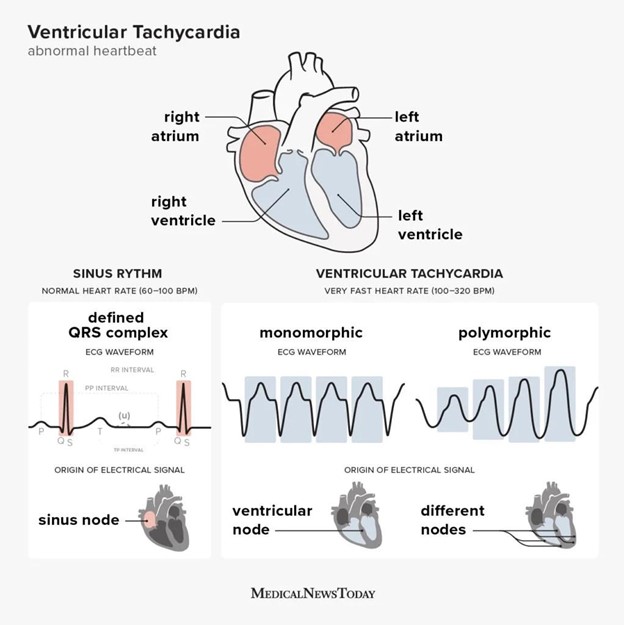A nurse is providing CPR to a child who has no pulse and is not breathing. The nurse should check for a brachial pulse by feeling:
The groove between the trachea and the sternocleidomastoid muscle
The inner aspect of the upper arm between the elbow and the shoulder
The outer aspect of the wrist below the thumb
The back of the knee behind the kneecap
The Correct Answer is B
Choice A Reason: This choice is incorrect because it describes the location of the carotid artery, which is used to check for a pulse in an adult.
Choice B Reason: This choice is correct because it describes the location of the brachial artery, which is used to check for a pulse in a child or an infant.
Choice C Reason: This choice is incorrect because it describes the location of the radial artery, which is used to check for a pulse in an adult or a conscious child.
Choice D Reason: This choice is incorrect because it describes the location of the popliteal artery, which is not used to check for a pulse in CPR.

Nursing Test Bank
Naxlex Comprehensive Predictor Exams
Related Questions
Correct Answer is A
Explanation
Choice A Reason: This choice is correct because it indicates that the AED has detected a shockable rhythm and is preparing to deliver a shock to the client's heart.
Choice B Reason: This choice is incorrect because it indicates that the AED has detected a non-shockable rhythm and advises the nurse to check for a pulse and start CPR if needed.
Choice C Reason: This choice is incorrect because it indicates that the AED has encountered a problem and advises the nurse to check for proper electrode placement and call for help.
Choice D Reason: This choice is incorrect because it indicates that the AED has detected a normal rhythm and advises the nurse to check for breathing and give oxygen if needed.

Correct Answer is C
Explanation
Choice A Reason: This choice is incorrect because compressing the chest at a rate of 60 to 80 compressions per minute is too slow and may not provide adequate blood flow.
Choice B Reason: This choice is incorrect because compressing the chest at a rate of 80 to 100 compressions per minute is too slow and may not provide adequate blood flow.
Choice C Reason: This choice is correct because compressing the chest at a rate of 100 to 120 compressions per minute is the recommended rate of chest compressions for CPR as described in the text.
Choice D Reason: This choice is incorrect because compressing the chest at a rate of 120 to 140 compressions per minute is too fast and may not allow the chest to recoil fully after each compression.
Whether you are a student looking to ace your exams or a practicing nurse seeking to enhance your expertise , our nursing education contents will empower you with the confidence and competence to make a difference in the lives of patients and become a respected leader in the healthcare field.
Visit Naxlex, invest in your future and unlock endless possibilities with our unparalleled nursing education contents today
Report Wrong Answer on the Current Question
Do you disagree with the answer? If yes, what is your expected answer? Explain.
Kindly be descriptive with the issue you are facing.
